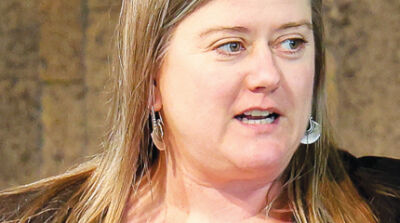METRO DETROIT — Changes to utility rates in Michigan are raising some eyebrows as customers are considering what this will mean for their electric bills.
DTE Energy, which serves more than 1.2 million customers in the metro Detroit area, will see some of the biggest impact from changes passed down from the Michigan Public Services Commission dictating how utility rates are charged per kilowatt hour.
“The Michigan Public Service Commission is transitioning all rate changes to this structure with utilities,” said Angie Pizzuti, chief customer officer for DTE. “There are distinct advantages. Right now, customers pay $16.09 cents per kWh and the rate goes to $18.06 for anything over 17 kWh. Off-peak hours will now be lower at $15.45.
“Between October and May they pay $16.75 during peak hours,” Pizzuti said. “From June to September, the rates would be $20.98 per kWh between 3 p.m. and 7 p.m. and $15.45 per kWh the rest of the day. … It allows customers the opportunity to use power when there are lower rates if they choose to perform activities during those off-peak hours.”
The new rate system will be put into place beginning in March.
Despite this possibly resulting in lower energy bills for those who are able to work around the peak hours under the new system, the increase in rates during peak hours, particularly during the warmer months, has some customers concerned. Many people don’t have the option to not use electronics during those peak hours, an issue that is even more relevant with so many people working from home.
“I work from home five days a week,” said Sterling Heights resident Shelly Weirsbaski. “I can’t choose to not have a Zoom meeting in the afternoon or turn off my computer when I’m supposed to be getting work done.”
This is even more concerning for those who have health issues and rely on devices such as breathing aids or dialysis machines. They obviously can’t wait until off-peak hours to use electric devices that help maintain their health.
Bert Copple is the owner of a Home Instead franchise, which provides in-home care for senior citizens. He said the effect that such changes could have on the senior citizen population could be troubling.
“For seniors on fixed incomes, we find those seniors are already incredibly cautious when it comes to spending money,” said Copple. “Often we find them already not using their air conditioning or heater or an appliance just to save money. They become very paranoid about how much they are spending on electricity. We have our workers arrive in their home and it’s too intolerable even for them.”
He said seniors who are worried about increases to their electricity bills could make decisions that are harmful to their health.
“I can easily see people trying to say, ‘I can go without oxygen during that time of day.’ That would be incredibly detrimental and dangerous,” said Copple. “The average person on oxygen uses a machine that runs on 300 watts per hour. Anything else running during that time also would go up. It will be problematic for people on a fixed income.”
Pizzuti said that DTE is aware of such concerns and said that they don’t expect people to stop using all devices during peak hours but that some appliances can be used during off-peak hours instead.
“We understand and we don’t want customers to completely stop service during peak hours,” she said. “They can still save money by using devices like washing machines or dishwashers during non-peak hours.”
She added that the rate changes are not a result of the switch over to smart utility meters performed over the last several years, which has been a concern for some in the community.
“When we installed the smart meters it was to provide more control, not to change how we charge,” Pizzuti said. “They eliminated manual meter reading. It allowed customers to monitor their usage. It allowed us to also detect power outages more quickly. The Michigan Public Services Commission wanted us to move to this hourly rate system.”
Pizzuti said that, ultimately, such changes are necessary to reduce strain on the power grid and that this is in no way designed to profit more from its customers.
“The new time of day structure is not a rate increase. It’s actually lower during most times of day,” she said. “It evens out peaks and reduces demand during high usage time. This way we don’t have to activate additional resources to generate that additional energy during those peak hours. … I think The Michigan Public Services Commission wanted to offer more choice to customers and to protect the grid as society becomes more and more electrified.”
Still, many in the community are worried about how the change to higher rates during peak hours will affect customers when implemented in the real world.
“I’m concerned for people on fixed incomes,” said Copple. “It is an incredibly vulnerable population, and what would happen if a senior turned off their heat at 4 p.m. and then they forget to turn it back on? Add in conditions like dementia, and this is a very real concern. It can dramatically affect the health of the senior with breathing and body temperature regulation. It will in turn affect caregivers who need to keep a closer eye on some seniors to ensure this sort of thing doesn’t happen.”
 Publication select ▼
Publication select ▼


























